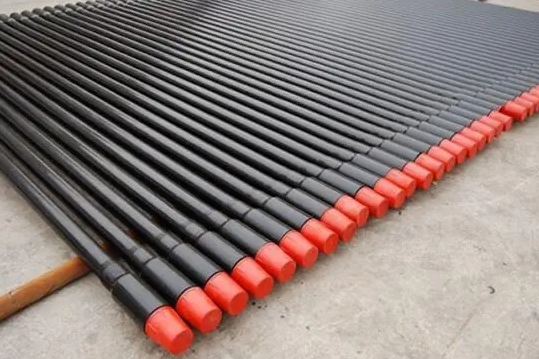Selection of rock drilling tools and their characteristics
Rock drilling tools are indispensable tools in drilling operations, and their performance is directly related to drilling quality, project progress and cost-effectiveness. Efficient drill tools can penetrate hard rocks, greatly improve operating efficiency, and ensure the safety and reliability of operations. So, how should we make the appropriate choice when faced with a variety of rock drilling tools?
When selecting rock drilling tools, four main considerations require special attention:
Material, shape, size and length: these properties of the drill rod must match the compatibility of the rock drill. The material determines the strength and wear resistance of the drill rod, while the shape, size and length affect the transmission efficiency and applicable operating range of the drill rod.
Power and rock hardness: Based on the power of the rock drill and the hardness of the rock, select a drill rod that can withstand the corresponding pressure and impact. For example, hard rock work may require a drill rod with higher strength and wear resistance.
Diameter, rock hole depth and connection requirements: The diameter and depth of the drill hole determine the specification selection of the drill rod. At the same time, the stability and reliability of the connection between the drill tool and the rock drill must be taken into consideration.
Interface and cross-section: Reasonable interface design and cross-sectional shape are the keys to achieving efficient drilling. A suitable interface can ensure the stability of the connection between the drill rod and the rock drill, and an appropriate cross-section can provide the necessary torque transmission.
The durability of the drill rod is one of the focuses of users, because frequent replacement of drilling tools not only affects operating efficiency but also increases costs. High-quality rock drilling tools usually have a longer service life and reduce the number of replacements, thereby saving costs. In addition, the hardness of the drill tool should also be appropriate. If it is too hard, it will easily cause breakage, and if it is too soft, it will wear out too quickly.
High-efficiency rock drilling operations can significantly reduce the cost per meter of drilling. Therefore, the rock drilling efficiency of the drill tool is an important indicator of its performance. Efficient drill tools not only increase the rock crushing speed, but also reduce energy consumption.
The straightness of the drill tool is also an important feature, because the straightness of the drill hole directly affects the blasting effect and safety. In medium and deep hole drilling and blasting operations, it is particularly important to maintain high-precision drilling straightness. Advanced guidance systems, precise manufacturing processes and rigid drill rod designs all help to minimize drilling deflection and ensure blasting efficiency and safety.
To sum up, when choosing rock drilling tools, we must not only consider basic specification matching, but also consider multiple dimensions such as durability, efficiency, and accuracy to ensure the efficiency and safety of rock drilling operations. In addition, taking into account the requirements of environmental protection and sustainable development, the development of new materials and the use of environmentally friendly lubricants have increasingly become important factors in the selection of rock drilling tools. By choosing the appropriate drill tool, you can achieve a win-win situation of economic benefits and environmental protection while ensuring the safety of workers.





